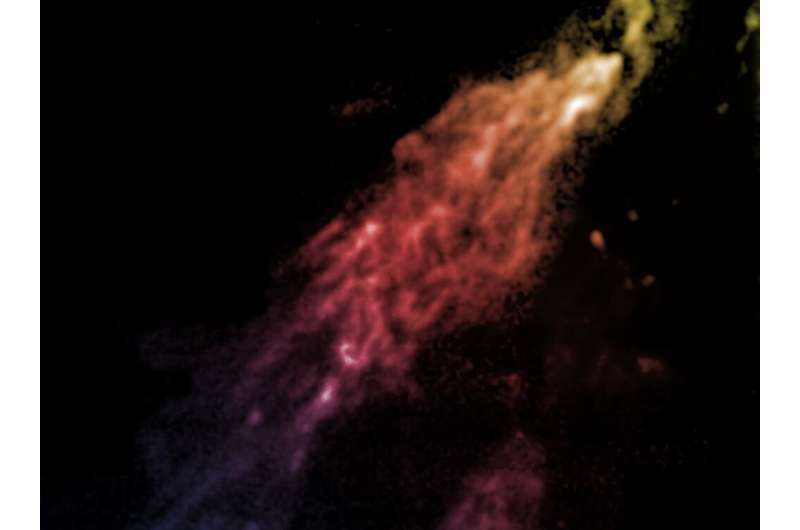This article has been reviewed according to Science X's editorial process and policies. Editors have highlighted the following attributes while ensuring the content's credibility:
fact-checked
preprint
trusted source
proofread
Astronomers go hunting for mysterious q-balls

Our universe may feature large, macroscopic clumps of dark matter known as q-balls. These q-balls would be absolutely invisible, but they may reveal their presence through tiny magnifications of starlight.
We do not currently understand the nature of dark matter. But we do know that it exists. Multiple independent lines of evidence all indicate that the vast majority of matter in the universe does not interact with light or with normal matter. It is, for all intents and purposes, invisible. But we can see the evidence for dark matter everywhere we look through its gravitational influence on normal matter. For example, galaxies rotate far too quickly given the amount of visible matter inside of them. Clusters of galaxies have gas that is far too hot to be accounted for by normal matter. Even the development of the large-scale structure of the universe occurred too rapidly for the amount of matter that we can see.
Until we have a better understanding of dark matter and its nature, we must work to develop ideas of what it might be. Most theories of dark matter assume that It is some exotic kind of fermion. Fermions are the type of matter that are the building blocks of nature, like electrons and protons. But other theories of dark matter are a little more exotic, arguing that it might be a form of boson. Bosons are typically associated with the force carriers of nature, like the photon that carries the electromagnetic force and the gluon that carries the strong nuclear force.
But dark matter may be an entirely new kind of boson. If it is, it might have some surprisingly strange properties. For example, this exotic form of dark matter may not be entirely smooth throughout a galaxy. Instead it may form stable clumps the size of stars. Known as q-balls, these clumps would remain stable but invisible, drifting through every galaxy.
In a recent paper published on the arXiv preprint server, a team of the astrophysicists have proposed a method to search for q-balls. Because they do not emit or absorb light, we can't look for them through the normal astronomical techniques. But q-balls would still have a lot of matter compressed into a relatively small volume. This can bend the path of light the same as any other massive object in the universe.
If a q-ball were to happen to pass through our line of sight to a distant star, then as we were watching that star the light would get temporarily bent and magnified in an effect called microlensing. The effect would be incredibly tiny but in principle measurable.
In fact the team behind the paper took existing microlensing surveys to see if they could rule out the existence of q-balls. They found that if q-balls exist, they can only comprise up to a few percent of all the dark matter in the universe.
The results aren't conclusive one way or the other, but they do signify one more step towards understanding the nature of dark matter.
More information: Arhum Ansari et al, Q-balls in the sky, arXiv (2023). DOI: 10.48550/arxiv.2302.11590
Journal information: arXiv
Provided by Universe Today





















